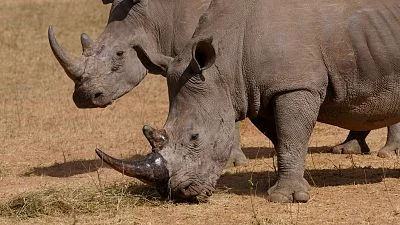
A Stark Reminder: The Ongoing Battle Against Rhino Poaching in South Africa
In a distressing turn of events, South Africa has witnessed the tragic slaughter of more than 100 rhinos within the first quarter of this year alone, most of which occurred in national parks. This alarming statistic underscores an urgent and ongoing battle to protect one of the world’s most recognizable endangered species.
Announced by South African Environment Minister Dion George, the figures reveal that of the 103 rhinos killed between January 1 and March 31, 65 were poached within the safe havens these parks are meant to provide. This trend, showing an average of over one rhino lost each day, serves as a stark reminder of the relentless threats facing our wildlife.
South Africa is home to the largest rhino population on the planet, estimated at 16,000 to 18,000 individuals. This remarkable statistic encompasses both black and white rhinos, with the former being critically endangered. According to the International Union for Conservation of Nature, only around 6,400 black rhinos exist in the wild today, with approximately 2,000 inhabiting South Africa.
The government has recognized the need for a more aggressive approach against poaching syndicates that drive this grim trend. In recent years, efforts have intensified towards dismantling these criminal networks. A notable success story emerged from last year when Simon Ernesto Valoi, labeled a poaching “kingpin” from Mozambique, was sentenced to 27 years in prison. Valoi was behind a major operation targeting rhinos in South Africa's expansive Kruger National Park, a site that borders Mozambique, which highlights the transnational nature of this crisis and the collaborative efforts required to combat it.
As environmental advocates warn, continued poaching may lead to the extinction of these magnificent creatures, whose presence enriches the ecosystem and captivates the hearts of people across the globe. The South African authorities and wildlife conservationists are faced with not just a law enforcement challenge but also a pressing moral imperative to safeguard the remaining rhino populations.
With the battle to protect rhinos ongoing, one must ask: what can be done to better support these efforts? As public awareness grows, the hope is that both local communities and international allies will unite against this crisis. We invite you to share your thoughts and engage with this vital conversation—what role do you think you can play in protecting our wildlife?